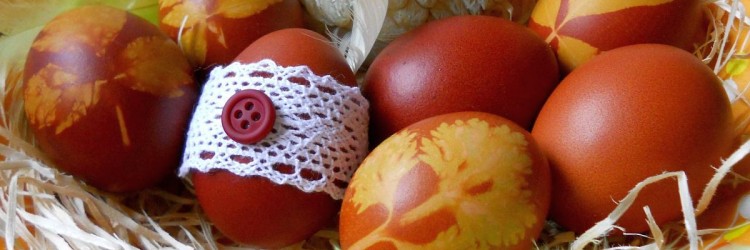Orthodox Easter in Podlasie Customs and traditions
Orthodox Easter is the most important and joyful event for Orthodox Christians. The day is often called Pascha.
It commemorates the death and Resurrection of Jesus Christ. In the Julian calendar it always falls later than Easter celebrated according to the Gregorian calendar used by many western churches. It’s after the time of March equinox, the first full moon and always after the Jewish Passover.
Preparations for Easter start with 40 days of strict fasting. During that time meat, animal-related foods and dairy products can’t be eaten.
Holy Thursday (Maundy Thursday) is the day of the Last Supper of Jesus Christ. In the evening the Holy Passion service of the reading of the Twelve Gospels is conducted. The faithful gather in Orthodox churches for prayer with lighted candles. After the service people take candles which are still lit to bless their homes.
On Good Friday Christians commemorate the death and burial of Jesus Christ It’s a day of strict fasting. In the morning people don’t eat and drink anything before they bow and kiss the plaschanitsa (a cloth icon, embroidered and often richly adorned). It’s called the epitaphios in Greek and the winding-sheet in English. In the afternoon people again gather in churches. Before the service begins, a “tomb” decorated with flowers is set up in the middle of the church. During the service a priest place the plaschanitsa with the image of Jesus Christ in the centre of the church.
On Holy Saturday people bring baskets with food to churches to be blessed by a priest. The Easter baskets are filled with hard-boiled eggs dyed with different colours (they represent the new life and Resurrection), bread, salt, ham, sausages and pascha – a kind of sweet bread.
On Saturday night the faithful gather in churches for midnight mass. Before 12 o’clock people and priests leave the church. The procession circles the church three times and returns to the main doors. The resurrection of Jesus Christ is announced by the ringing of church bells. The priest makes the sign of the cross in front of the closed doors (which represent the sealed tomb of Christ). Those gathered for prayer sing the hymn “Christ is Risen from the Dead,” and greeting each other joyously, Christos Voskrese (Christ is risen) and responding with Voistinu Voskrese (Indeed. He is risen). The Easter mass ends at 3 or 4 a.m
On Easter Sunday families gather at a table and eat the traditional Easter breakfast – the food they blessed in baskets on Saturday. They usually start with sharing the eggs and salt. People spend the whole day with their families sitting at one table and eating chicken, duck, salads and cakes such as cheesecake. The celebration lasts three days.
Justyna Wasyluk




Leave a Reply